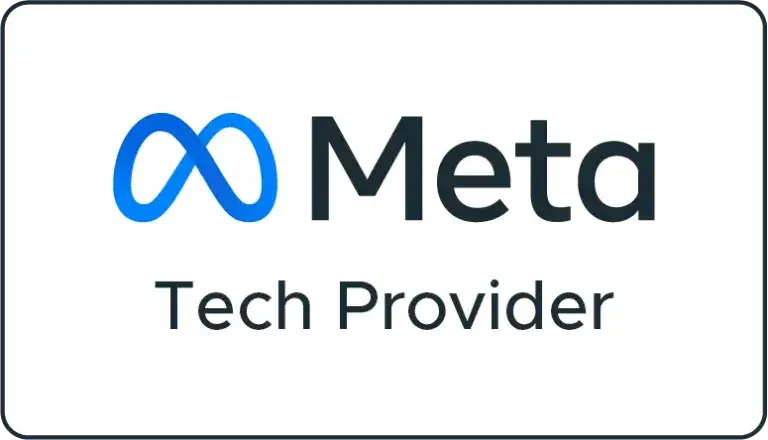In today’s fast-paced digital landscape, where consumers are constantly bombarded with marketing messages, email automation has emerged as a crucial tool for nurturing leads effectively. This powerful marketing strategy allows businesses to deliver timely and relevant messages to potential customers, fostering relationships that lead to increased engagement and conversions. By automating your email campaigns, you can efficiently guide leads through the buyer’s journey, transforming them into loyal customers.
Understanding the Importance of Email Automation

Email automation involves sending triggered or scheduled emails to your subscribers based on their interactions with your brand. Whether it’s a welcome email, follow-up after a product demo, or reminders for abandoned carts, automation ensures that you maintain consistent communication with your leads. This approach is essential for nurturing relationships and providing the right information at the right time.
When executed effectively, email automation can significantly enhance your marketing efforts by:
- Reducing manual workload, allowing you to focus on strategy and creativity.
- Ensuring timely communication with leads based on their behavior and preferences.
- Personalizing the customer experience, leading to higher engagement rates.
Segmenting Your Audience for Personalization

One of the most critical aspects of effective email automation is audience segmentation. By dividing your email list into specific groups based on various factors such as demographics, purchase history, or engagement levels, you can craft targeted and relevant messages.
For instance, new subscribers might receive a series of welcome emails, while long-time customers could be sent tailored product recommendations based on their previous purchases. This level of personalization makes recipients feel valued and understood, leading to better engagement and increased conversion rates.
Designing Lead Nurturing Workflows
A lead nurturing workflow is a series of automated emails designed to guide prospects through the sales funnel. To create effective workflows, it’s essential to understand the customer journey and identify touchpoints where email communication can add value.
A common lead nurturing workflow might look like this:
- Welcome Sequence: New subscribers receive a series of emails introducing your brand, products, or services, helping them feel comfortable and informed.
- Educational Sequence: Based on their interests, send valuable content such as blog posts, guides, or tutorials that align with their needs.
- Product Recommendations: After a subscriber interacts with your website, send personalized product suggestions based on their behavior.
- Abandoned Cart Reminders: For users who leave items in their cart, follow up with a gentle reminder, possibly including an incentive to complete their purchase.
- Re-engagement Emails: For subscribers who haven’t interacted with your emails in a while, send targeted campaigns to reignite their interest.
Each email should be strategically crafted to provide relevant information and encourage the recipient to take the next step in their buyer journey.
Personalization and Dynamic Content
Generic emails are less likely to resonate with recipients. Personalization is crucial in making your emails stand out. Utilize data such as the recipient’s name, location, and behavior to tailor messages to their specific needs.
Dynamic content is a powerful feature in many email automation platforms, allowing you to create different versions of the same email based on recipient profiles. For example, an eCommerce store can send personalized product recommendations tailored to customers’ past purchases or browsing behavior. The more personalized and relevant the content, the more likely it is to engage the recipient.
Monitoring and Optimizing Automated Campaigns

To nurture leads effectively, it’s vital to monitor the performance of your automated email campaigns. Key metrics to track include open rates, click-through rates (CTR), conversion rates, and unsubscribe rates. This data will help you evaluate the effectiveness of your campaigns.
Regularly review your campaigns and optimize them based on performance data. Experiment with different subject lines, email content, sending times, and calls to action (CTAs) to identify what resonates most with your audience. A/B testing can be particularly useful in refining your emails and ensuring they deliver the desired results.
Using Behavioral Triggers to Drive Engagement
Behavioral triggers are specific actions taken by users that prompt automated email responses. By setting up these triggers, you can ensure that your leads receive timely emails aligned with their interactions.
Common behavioral triggers include:
- Browsing behavior: Send follow-up emails based on products or services viewed on your website.
- Downloads or sign-ups: After a user downloads a resource or signs up for a webinar, follow up with a thank-you email or related content.
- Abandoned carts: Remind users to complete their purchase if they leave items in their cart without checking out.
- Purchase confirmations: Send order confirmations and post-purchase emails with recommendations or cross-sell offers.
Using behavioral triggers ensures that your emails feel natural and relevant, making them more likely to resonate with recipients.
Best Practices for Effective Email Automation

To maximize the impact of your email automation efforts, consider these best practices:
- Keep it Relevant: Ensure that your emails address the recipient’s current stage in the buyer’s journey. Avoid overwhelming them with irrelevant content.
- Timing is Key: Schedule your automated emails to be sent at optimal times to maximize engagement. For instance, follow up shortly after key actions like sign-ups or product views.
- Clear Calls-to-Action: Every email should include a clear and actionable CTA that guides the recipient on what to do next.
- Mobile Optimization: As many users read emails on mobile devices, ensure your emails are mobile-friendly with responsive designs and easily clickable buttons.
- Test and Refine: Continuously test and improve your email automation workflows to keep them performing optimally.
Conclusion
Email automation is a powerful tool for nurturing leads and providing timely, personalized communication that drives engagement and conversions. By segmenting your audience, using behavioral triggers, and designing effective lead-nurturing workflows, you can ensure that your automated emails resonate with recipients and guide them through the sales funnel. Regularly monitoring performance and optimizing campaigns will help you maximize the effectiveness of your email automation efforts, ultimately turning leads into loyal customers.
Embrace email automation as a vital component of your marketing strategy, and you’ll witness significant improvements in lead nurturing and overall business growth.
FAQs:
What is email automation, and how does it work?
Email automation is the process of sending triggered or scheduled emails to subscribers based on their interactions with a brand. It works by setting up workflows that automatically send emails at predetermined times or in response to specific actions taken by users, such as signing up for a newsletter, downloading a resource, or abandoning a shopping cart. This allows businesses to provide timely and personalized communication, helping nurture leads through the customer journey.
How can I segment my audience for better email automation results?
Audience segmentation involves dividing your email list into specific groups based on criteria such as demographics, purchase history, engagement levels, or interests. This can be achieved by analyzing data collected through sign-up forms, website interactions, and customer feedback. By segmenting your audience, you can create targeted and relevant email campaigns that resonate with each group’s unique needs, leading to higher engagement and conversion rates.
What metrics should I track to measure the success of my email automation campaigns?
Key metrics to track for measuring the success of email automation campaigns include open rates, click-through rates (CTR), conversion rates, unsubscribe rates, and engagement levels. Monitoring these metrics will help you evaluate the effectiveness of your email campaigns, identify areas for improvement, and optimize your strategies to better engage your audience.
How often should I send automated emails to my subscribers?
The frequency of automated emails depends on your audience and the specific goals of your campaigns. While it’s essential to maintain consistent communication, sending too many emails can lead to subscriber fatigue and increased unsubscribe rates. A general guideline is to send emails based on user engagement and behavior—such as welcome sequences, follow-ups, or re-engagement campaigns—rather than a set schedule. Testing different frequencies can also help you determine what works best for your audience.













